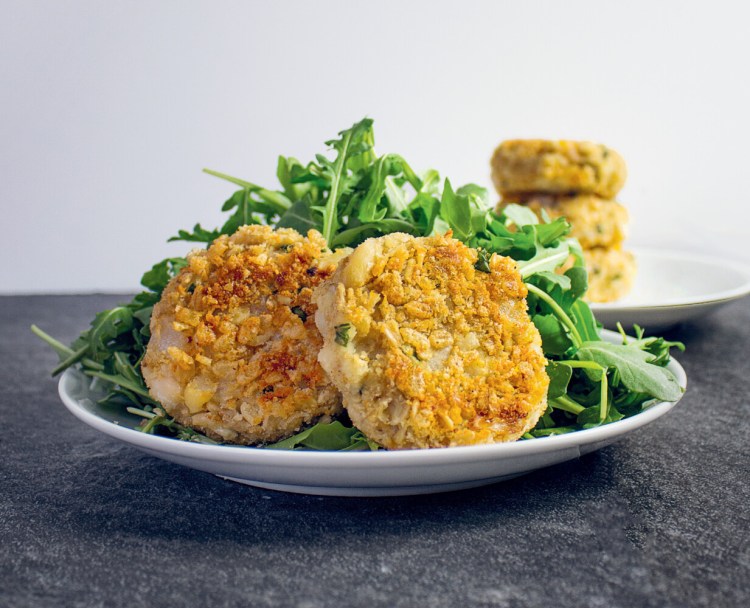It seems like there is always a new fad diet on the market: keto, paleo, nondairy, intermittent fasting, you name it. Some of these undoubtedly have their health benefits, but many are just that – fads. Such was my original judgment on this cookbook, “The Anti-Inflammatory Kitchen Cookbook” by Leslie Langevin.

Cover courtesy of Sterling Epicure
The first chapter of the book is personal. Langevin, a registered dietitian who lives in Vermont, describes her diagnosis with histamine intolerance and her journey to find and develop recipes that satisfied her low-histamine diet requirements. (The book’s subtitle is “More than 100 Healing, Low-Histamine, Gluten-Free Recipes.”)
The introduction provides lots of information about histamine, a chemical released by the body in response to allergic reactions. Histamine production is normal and natural, but excess histamine in the diet can lead to too much histamine in the body. The excess can present itself as many assorted symptoms including acid reflux, skin irritation and gastrointestinal discomfort.
Langevin also writes about the connection between histamines and inflammation. The chemicals that trigger inflammation are typically released at the same time as histamines. For people with histamine intolerance or sensitivity, limiting foods that are naturally high in histamine can help. “The Anti-Inflammatory Kitchen Cookbook” contains lists of foods that are naturally low in histamines and combat inflammation, as well as a list of foods to avoid. Remember that unless you are sensitive to histamines, these foods are perfectly fine to eat.
The cookbook is divided by meals: breakfast, snacks, lunch, sides, dinner, and desserts. Each recipe is accompanied with a beautiful photo, and each is tagged with informative labels like “crowd pleaser,” “great snack,” “high protein,” “superfood,” “fast” or “kid friendly.” Many recipes also contain notes with suggested variations or tips.
All of the dishes – such as sweet potato–ginger muffins, acorn squash soup, mango salsa salmon, and mushroom–rosemary chicken — looked so fresh and delicious that it was difficult to choose one, but I eventually settled on a recipe for White Bean & Basil Cakes. As avid veggie burger connoisseurs, my family is always looking for new variations. The ingredients were all staples of our pantry – a bonus. Canned foods tend to be high in histamines, so the recipe specified that cooks should use dried, soaked and cooked beans instead. We don’t often buy dried beans, probably because they involve far more preparation, so we opted for canned beans – none of us has a histamine intolerance. For the basil, we used fresh from our garden.
The cookbook originally caught my eye because my brother was recently diagnosed with asthma, a condition he is trying to manage through his diet. This idea of food as medicine is the central theme of the book, and the more I read, the more insights I gained on how to adjust my own diet for optimal health and well-being and the more I revised my original judgment.
The bean and basil cakes held together extremely well, which is one of my criterion for a good veggie burger. They were delicious served on a bed of greens, just as “The Anti-Inflammatory Kitchen Cookbook” suggested. Flavorful, satisfying, and summery, these bean burgers are definitely a keeper for our veggie burger recipe collection.
White Bean & Basil Cakes
From Leslie Langevin’s “The Anti-Inflammatory Kitchen Cookbook.” Langevin says you can use navy, cannellini or great northern beans.
Prep time: 10 minutes, Cook time: 1 hour.
Makes 4 servings
2 large sweet onions
2 tablespoons water
5 tablespoons olive oil, divided
1/2 teaspoon salt
2 cups cooked white beans
1/2 cup rolled oats
1 clove garlic, minced, plus 1 clove for flavoring the saute pan
1/4 cup chopped fresh basil
1 cup crushed crispy rice cereal
- Chop the onions.
- In a medium pan over medium heat, combine the onions, water, 1 tablespoon olive oil and salt. Cover, reduce heat to medium-low, and simmer for about 1 hour or until onions caramelize and become very tender.
- In a large bowl, combine the white beans and oats and crush them together with a potato masher.
- Add minced garlic, caramelized onions and basil to the bean mixture and stir to combine.
- Preheat a skillet over medium heat and add 2 tablespoons olive oil and a clove of garlic.
- Form the bean mixture into patties, dredge them in the crushed cereal, then saute for about 4 minutes on each side or until golden and warmed through. Remove the clove of garlic before it gets to brown and bitter tasting.
- Serve on a bed of greens.
Send questions/comments to the editors.



Comments are no longer available on this story